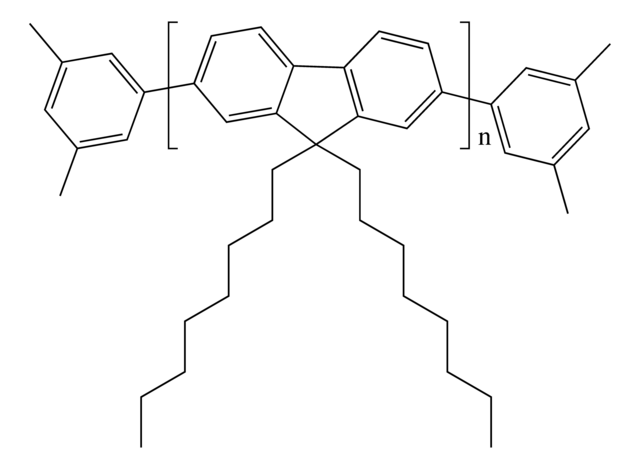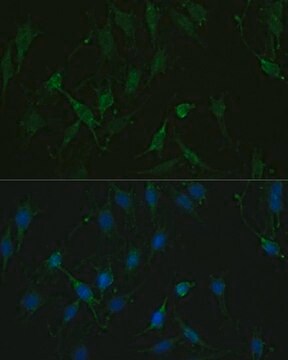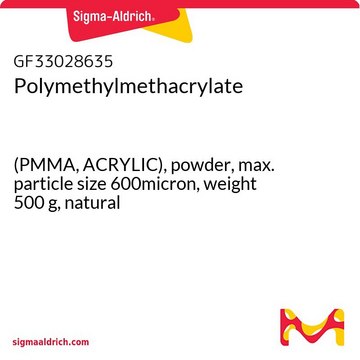AB5154
Anti-Cav2.2 Antibody
Chemicon®, from rabbit
Synonim(y):
Voltage Gated Calcium Channel (N-type) alpha 1B Subunit, Cacna1b
About This Item
Polecane produkty
pochodzenie biologiczne
rabbit
Poziom jakości
forma przeciwciała
affinity purified immunoglobulin
rodzaj przeciwciała
primary antibodies
klon
polyclonal
oczyszczone przez
affinity chromatography
reaktywność gatunkowa
rat
producent / nazwa handlowa
Chemicon®
metody
immunocytochemistry: suitable
immunohistochemistry: suitable (tissue)
immunoprecipitation (IP): suitable
western blot: suitable
numer dostępu NCBI
numer dostępu UniProt
Warunki transportu
wet ice
docelowa modyfikacja potranslacyjna
unmodified
informacje o genach
rat ... Cacna1B(257648)
Specyficzność
SPECIES REACTIVITIES: It is expected that the antibody will also work on mouse due to sequence homology (15/17). Other species have not been tested.
Immunogen
Zastosowanie
Immunoprecipitation
Immunocytochemistry. Recommend subsequent staining with a labeled second antibody.
Western blot: 1.5 to 3.0 μg/mL (1:100-1:200) using ECL
Dilutions should be made using a carrier protein such as BSA (1-3%)
Optimal working dilutions must be determined by the end user.
Neuroscience
Ion Channels & Transporters
Neuroinflammation & Pain
Postać fizyczna
Przechowywanie i stabilność
Komentarz do analizy
Included free of charge with the antibody is 40 μg of control antigen (lyophilized powder). The stock solution of the antigen can be made up using 100 μL of sterile deionized water. For negative control, preincubate 1 μg of peptide with 10 μg of antibody for one hour at room temperature. Optimal concentrations must be determined by the end user.
Inne uwagi
Informacje prawne
Oświadczenie o zrzeczeniu się odpowiedzialności
Nie możesz znaleźć właściwego produktu?
Wypróbuj nasz Narzędzie selektora produktów.
Zwroty wskazujące rodzaj zagrożenia
Zwroty wskazujące środki ostrożności
Klasyfikacja zagrożeń
Aquatic Chronic 3
Kod klasy składowania
11 - Combustible Solids
Klasa zagrożenia wodnego (WGK)
WGK 3
Certyfikaty analizy (CoA)
Poszukaj Certyfikaty analizy (CoA), wpisując numer partii/serii produktów. Numery serii i partii można znaleźć na etykiecie produktu po słowach „seria” lub „partia”.
Masz już ten produkt?
Dokumenty związane z niedawno zakupionymi produktami zostały zamieszczone w Bibliotece dokumentów.
Nasz zespół naukowców ma doświadczenie we wszystkich obszarach badań, w tym w naukach przyrodniczych, materiałoznawstwie, syntezie chemicznej, chromatografii, analityce i wielu innych dziedzinach.
Skontaktuj się z zespołem ds. pomocy technicznej








![1,4-Bis[4-(3-acryloyloxypropyloxy) benzoyloxy]-2-methylbenzene ≥97%](/deepweb/assets/sigmaaldrich/product/structures/380/149/2ffc4f5a-48c2-4bd1-9160-dfee808e5133/640/2ffc4f5a-48c2-4bd1-9160-dfee808e5133.png)